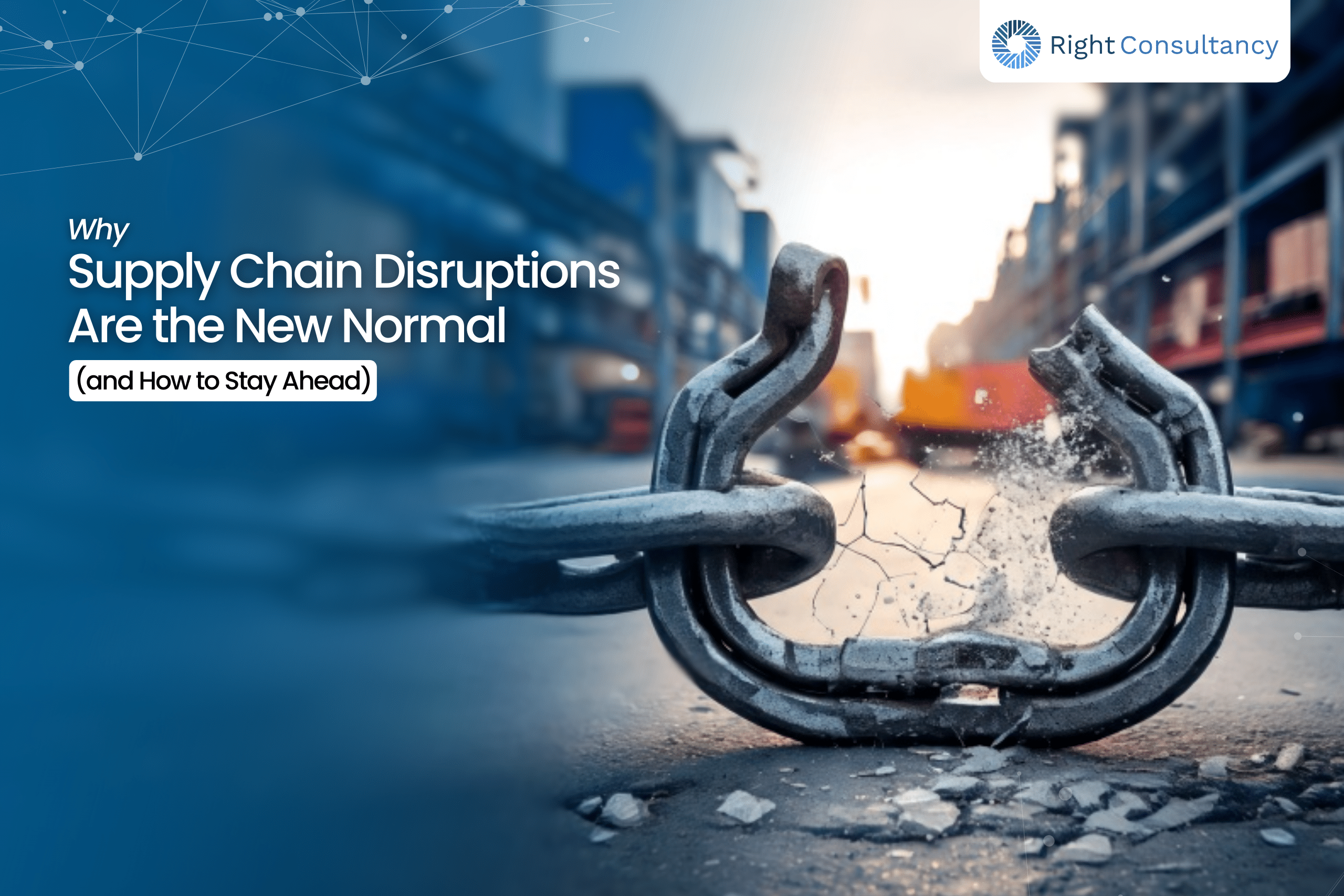Why Supply Chain Disruptions Are the New Normal and How to Stay Ahead?
Why Supply Chain Disruptions Are the New Normal and How to Stay Ahead?

Supply chain disruptions are no longer rare curveballs – they’re happening with clockwork regularity. From factory shutdowns in Asia to blocked canals, port strikes, and container shortages, the pressure on global logistics is relentless. Businesses that once relied on stable, linear supply chains are now navigating a web of uncertainties.
The truth? The game has changed. What used to be a one-off crisis is now a recurring theme. Hoping for a return to “how things were” is wishful thinking. Instead, leaders must pivot to a mindset where volatility is expected – and baked into strategy.
The Age of UncertaintyLet’s be clear – the old playbook is outdated. Relying on a single supplier, sourcing from one region, or optimizing purely for cost is like walking a tightrope in a windstorm.
Here’s what’s changing:- Global dependencies are fragile – The Russia-Ukraine war, US-China trade tensions, and port congestion all proved that over-reliance on any one region is risky business.
- Customer expectations are rising – People want it now. And if you can’t deliver, they’ll find someone who will.
- Climate change isn’t a side note – Floods, wildfires, droughts – these events are no longer rare and often hit the world’s manufacturing and logistics hubs first.
- Data security matters – As supply chains become more digital, cyberattacks are emerging as a real, costly threat.
This isn’t about bracing for impact – it’s about designing your supply chain to bend without breaking. Here’s how:
1. Build Redundancy into Your NetworkThe era of lean, single-source strategies is over. Create a flexible supplier base across multiple geographies to increase adaptability and reduce dependency on any single point of failure.
2. Invest in VisibilityIf you can’t see it, you can’t fix it. Use AI, blockchain, and IoT to track your inventory and shipments in real time. Transparency is your most valuable currency now.
3. Make Resilience a KPISpeed matters, but resilience should be built into the performance metrics. Create buffers, stockpile critical components, and have backup vendors on standby.
4. Train for ChaosHave contingency plans. Run stress tests. Empower your teams to make quick decisions. The goal? Turn disruption into a competitive advantage.
5. Go Green (Seriously)Sustainability isn’t just for PR – it’s about future-proofing. Regulatory pressures are growing, and eco-conscious operations are often more efficient and cost-effective long-term.
Control What You Can, Plan for What You Can’tSupply chains used to be back-office operations. Today, they’re front and center – shaping customer experience, brand reputation, and revenue. The businesses that thrive will be those that view disruption not as a roadblock, but as a design challenge.
Adaptability isn’t optional anymore. It’s the differentiator.
